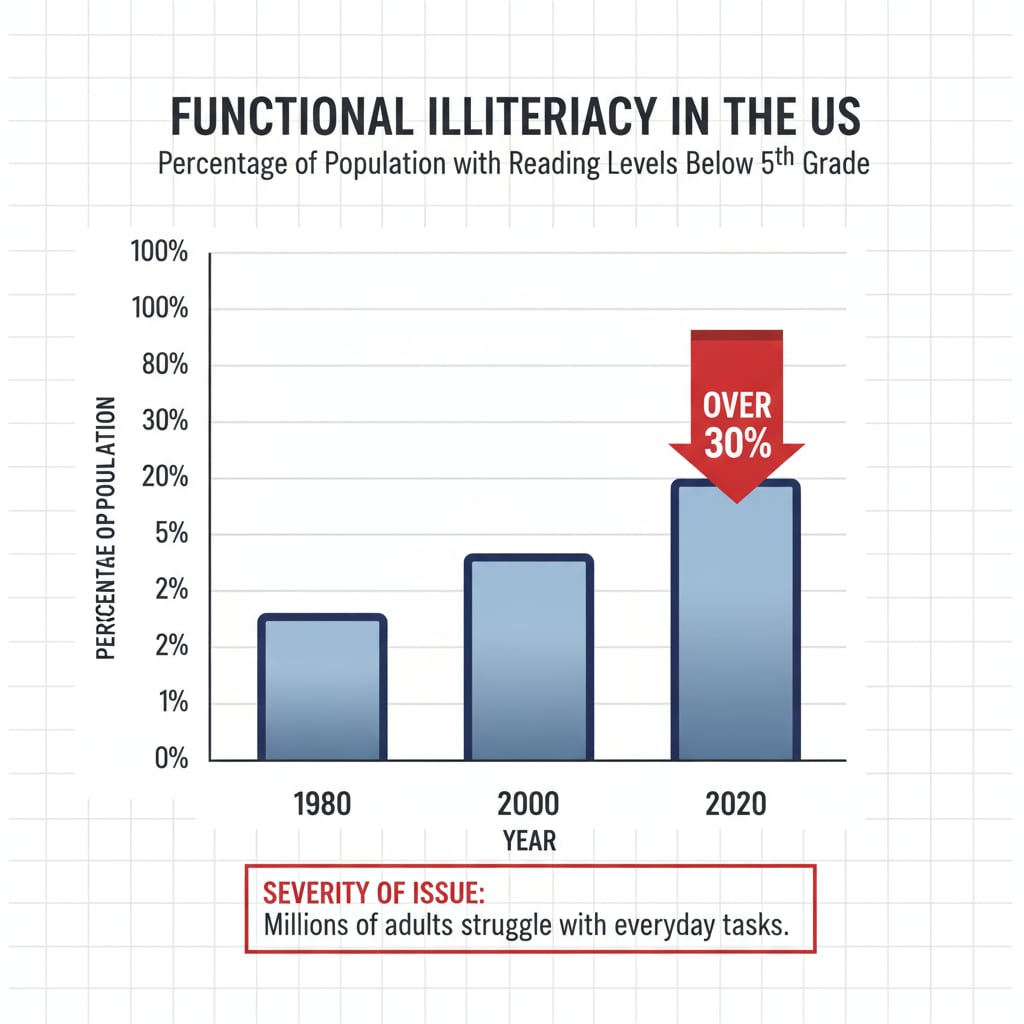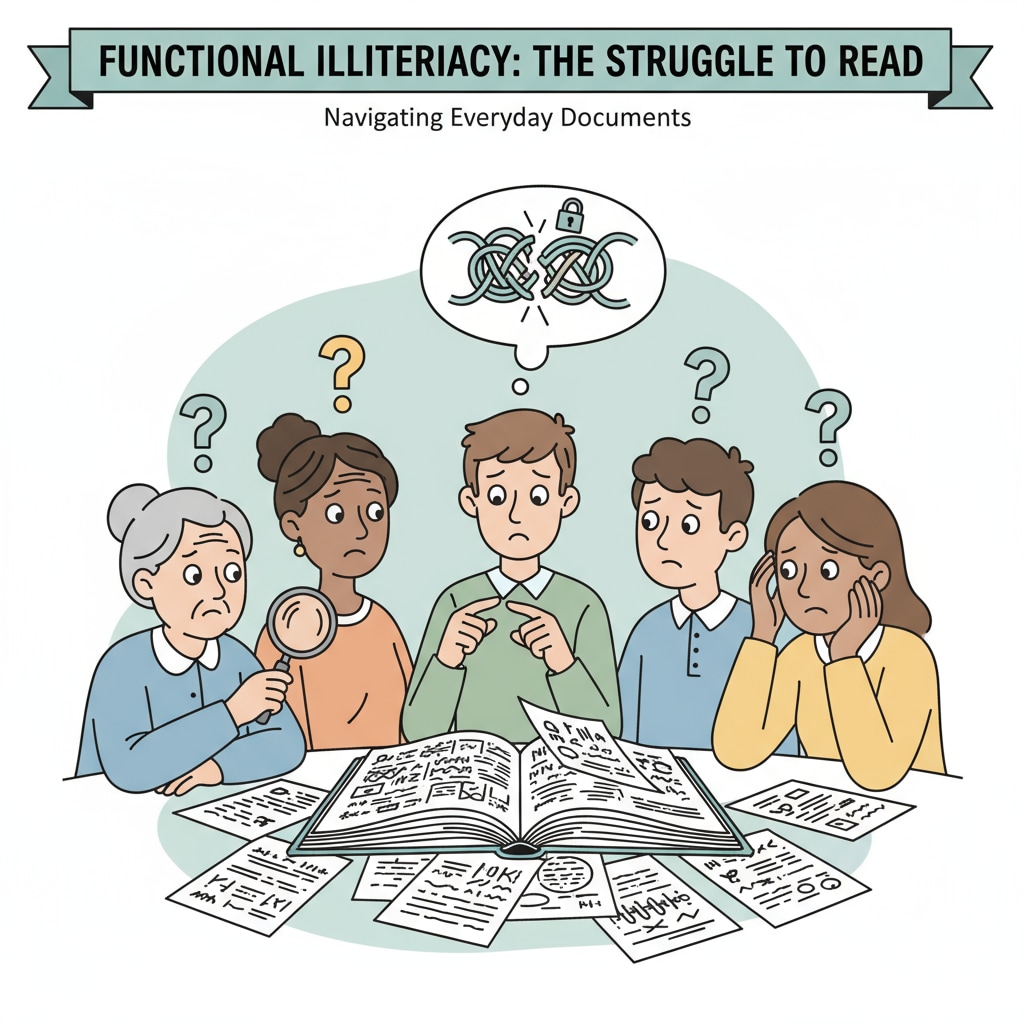The issue of functional illiteracy, reading comprehension, and education crisis in the United States has become a matter of great concern. A startling fact reveals that 54% of the US population has a reading level below the 5th grade, which signals a significant problem within the nation’s educational framework.

This high rate of functional illiteracy not only affects individuals but also poses potential threats to the country’s social and national development.
The Alarming Prevalence of Functional Illiteracy
The term “functional illiteracy” refers to individuals who, despite having some basic education, struggle to perform tasks that require a certain level of reading and writing skills in their daily lives. In the US, this has manifested in a large portion of the population being unable to understand complex texts, fill out forms accurately, or make informed decisions based on written information. For example, many adults may face difficulties in reading medical instructions, financial documents, or even simple job-related materials. According to National Center for Education Statistics, this widespread issue has far-reaching consequences.

Impact on Social Development
Functionally illiterate individuals often face barriers in participating fully in society. They may have limited access to better job opportunities, which can lead to lower income levels and higher poverty rates. In addition, it becomes challenging for them to engage in community activities, understand local policies, and contribute to social discussions. This lack of active participation can slow down the progress of social development as a whole. As a result, social cohesion may be affected, and inequalities may widen between different segments of the population.
Threats to National Development
On a national scale, a high rate of functional illiteracy can impede economic growth. In today’s knowledge-based economy, a literate workforce is crucial for innovation, productivity, and competitiveness. With a significant portion of the population lacking adequate reading and comprehension skills, it becomes difficult for the country to keep up with global technological advancements. Moreover, it can also strain public resources as more support may be needed to assist these individuals in various aspects of life, such as providing additional educational programs or welfare support.
Readability guidance: The paragraphs above use simple language and short sentences to convey the key points. Transition words like “for example”, “in addition”, and “as a result” are used to make the flow more logical. Each section focuses on a different aspect of the issue, presenting a clear picture of the problem.


